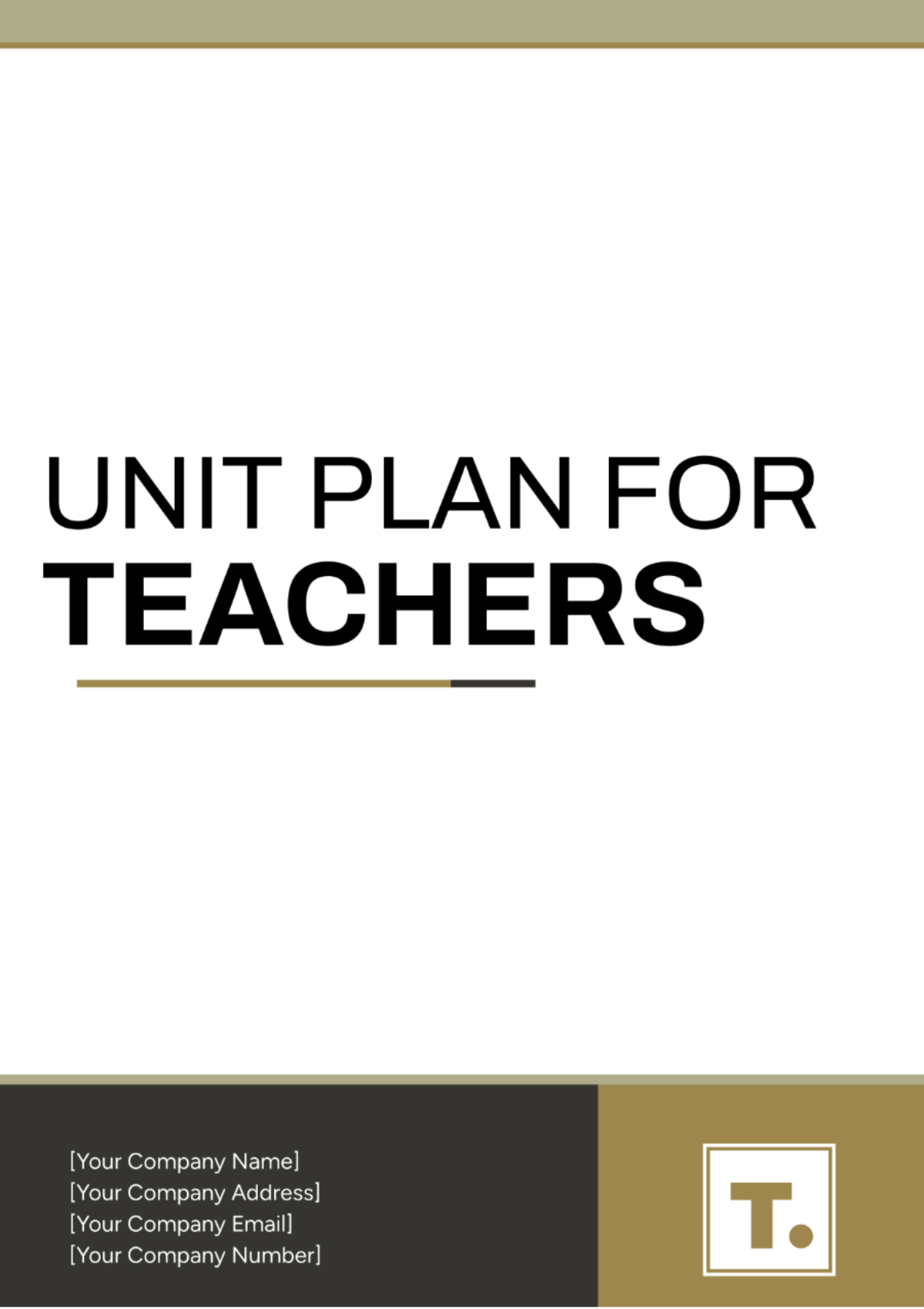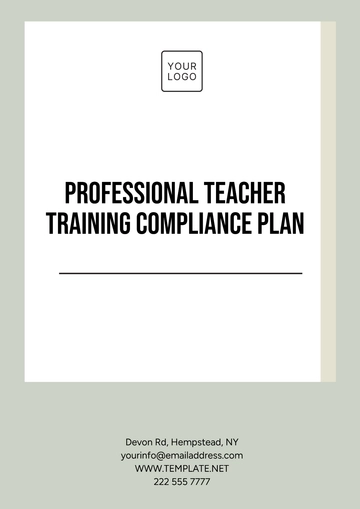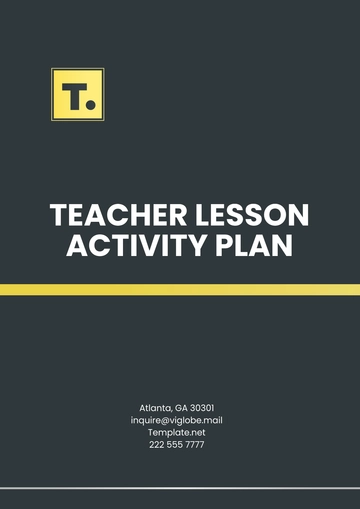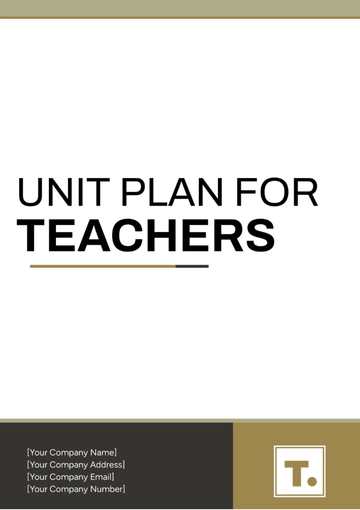Free Unit Plan for Teachers

Prepared By: [Your Name]
Date: [Date]
I. Unit Title:
Ancient Egypt: Land of the Pharaohs |
II. Unit Overview:
This unit introduces students to the civilization of Ancient Egypt, exploring its geography, society, culture, and legacy. Students will learn about the Nile River, Egyptian gods and goddesses, daily life, and achievements such as the pyramids and hieroglyphics.
III. Learning Objectives:
Locate Ancient Egypt on a map and describe its geographical features.
Identify key aspects of Egyptian society, including social classes and roles.
Explain the significance of religion in Ancient Egyptian culture.
Describe major achievements of Ancient Egypt, such as monumental architecture and written language.
Analyze the impact of Ancient Egyptian civilization on world history and modern society.
IV. Essential Questions:
Essential Questions: |
|---|
1. How did the geography of Ancient Egypt shape its civilization? |
2. What were the roles of pharaohs, priests, and peasants in Egyptian society? |
3. What were the beliefs and practices of Ancient Egyptian religion? |
4. What were the major achievements of Ancient Egypt, and how did they contribute to its legacy? |
5. In what ways does Ancient Egypt continue to influence our world today? |
V. Instructional Strategies:
Multimedia presentations showcasing images, videos, and virtual tours of Ancient Egyptian landmarks.
Interactive activities such as map quizzes, artifact analysis, and role-playing scenarios.
Guided discussions exploring Egyptian mythology, rituals, and daily life.
Hands-on projects including constructing model pyramids, creating hieroglyphic messages, and designing cartouches.
Virtual field trips to museums or archaeological sites featuring Ancient Egyptian artifacts.
VI. Assessment Plan:
Formative assessments: Daily exit tickets, group discussions, and interactive quizzes to check for understanding.
Summative assessments: Unit test consisting of multiple-choice, short answer, and essay questions.
Performance tasks: Create an Ancient Egyptian artifact exhibit, write a persuasive essay on the importance of the Nile River, or present a skit depicting daily life in Ancient Egypt.
VII. Differentiation:
Provide differentiated readings and materials at varying reading levels to accommodate diverse learners.
Offer choice in assignments, allowing students to demonstrate understanding through written, visual, or hands-on projects.
Provide additional support and scaffolding for English language learners and students with learning disabilities.
VIII. Resources and Materials:
Resources and Materials: |
|---|
Textbook: "Ancient Civilizations" by Pearson Education. |
Online resources: National Geographic Kids website, British Museum's Ancient Egypt collection. |
Hands-on materials: Papyrus paper, clay for model-making, and craft supplies for creating Egyptian jewelry. |
Virtual resources: Interactive maps, digital museum tours, and educational videos on Ancient Egypt. |
IX. Timeline:
Timeline: |
|---|
Week 1: Introduction to Ancient Egypt, geography, and the Nile River. |
Week 2: Egyptian society, social classes, and daily life. |
Week 3: Religion and mythology in Ancient Egypt. |
Week 4: Achievements of Ancient Egypt, including architecture, art, and writing. |
Week 5: Legacy of Ancient Egypt and connections to modern society. |
X. Reflection and Revision:
Teachers will reflect on student engagement and comprehension throughout the unit, adjusting instruction as needed to address areas of difficulty.
Student feedback will be gathered through informal assessments and class discussions, informing future unit planning and instructional practices.
- 100% Customizable, free editor
- Access 1 Million+ Templates, photo’s & graphics
- Download or share as a template
- Click and replace photos, graphics, text, backgrounds
- Resize, crop, AI write & more
- Access advanced editor
Elevate your lesson planning with the Unit Plan for Teachers Template, offered by Template.net. This fully customizable and printable template ensures streamlined organization for educators. Downloadable and editable in our AI Editor Tool, it allows for effortless adjustments to fit any curriculum. Simplify your planning process and enhance your teaching efficiency today.
You may also like
- Finance Plan
- Construction Plan
- Sales Plan
- Development Plan
- Career Plan
- Budget Plan
- HR Plan
- Education Plan
- Transition Plan
- Work Plan
- Training Plan
- Communication Plan
- Operation Plan
- Health And Safety Plan
- Strategy Plan
- Professional Development Plan
- Advertising Plan
- Risk Management Plan
- Restaurant Plan
- School Plan
- Nursing Home Patient Care Plan
- Nursing Care Plan
- Plan Event
- Startup Plan
- Social Media Plan
- Staffing Plan
- Annual Plan
- Content Plan
- Payment Plan
- Implementation Plan
- Hotel Plan
- Workout Plan
- Accounting Plan
- Campaign Plan
- Essay Plan
- 30 60 90 Day Plan
- Research Plan
- Recruitment Plan
- 90 Day Plan
- Quarterly Plan
- Emergency Plan
- 5 Year Plan
- Gym Plan
- Personal Plan
- IT and Software Plan
- Treatment Plan
- Real Estate Plan
- Law Firm Plan
- Healthcare Plan
- Improvement Plan
- Media Plan
- 5 Year Business Plan
- Learning Plan
- Marketing Campaign Plan
- Travel Agency Plan
- Cleaning Services Plan
- Interior Design Plan
- Performance Plan
- PR Plan
- Birth Plan
- Life Plan
- SEO Plan
- Disaster Recovery Plan
- Continuity Plan
- Launch Plan
- Legal Plan
- Behavior Plan
- Performance Improvement Plan
- Salon Plan
- Security Plan
- Security Management Plan
- Employee Development Plan
- Quality Plan
- Service Improvement Plan
- Growth Plan
- Incident Response Plan
- Basketball Plan
- Emergency Action Plan
- Product Launch Plan
- Spa Plan
- Employee Training Plan
- Data Analysis Plan
- Employee Action Plan
- Territory Plan
- Audit Plan
- Classroom Plan
- Activity Plan
- Parenting Plan
- Care Plan
- Project Execution Plan
- Exercise Plan
- Internship Plan
- Software Development Plan
- Continuous Improvement Plan
- Leave Plan
- 90 Day Sales Plan
- Advertising Agency Plan
- Employee Transition Plan
- Smart Action Plan
- Workplace Safety Plan
- Behavior Change Plan
- Contingency Plan
- Continuity of Operations Plan
- Health Plan
- Quality Control Plan
- Self Plan
- Sports Development Plan
- Change Management Plan
- Ecommerce Plan
- Personal Financial Plan
- Process Improvement Plan
- 30-60-90 Day Sales Plan
- Crisis Management Plan
- Engagement Plan
- Execution Plan
- Pandemic Plan
- Quality Assurance Plan
- Service Continuity Plan
- Agile Project Plan
- Fundraising Plan
- Job Transition Plan
- Asset Maintenance Plan
- Maintenance Plan
- Software Test Plan
- Staff Training and Development Plan
- 3 Year Plan
- Brand Activation Plan
- Release Plan
- Resource Plan
- Risk Mitigation Plan
- Teacher Plan
- 30 60 90 Day Plan for New Manager
- Food Safety Plan
- Food Truck Plan
- Hiring Plan
- Quality Management Plan
- Wellness Plan
- Behavior Intervention Plan
- Bonus Plan
- Investment Plan
- Maternity Leave Plan
- Pandemic Response Plan
- Succession Planning
- Coaching Plan
- Configuration Management Plan
- Remote Work Plan
- Self Care Plan
- Teaching Plan
- 100-Day Plan
- HACCP Plan
- Student Plan
- Sustainability Plan
- 30 60 90 Day Plan for Interview
- Access Plan
- Site Specific Safety Plan


